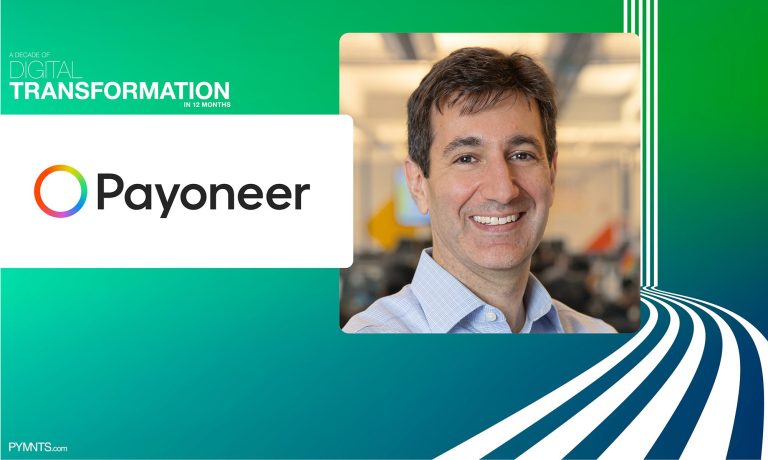
In A Decade of Digital Transformation in 12 Months, 46 C-suite executives spoke with PYMNTS for its Q2 eBook on what the world will look like as recovery rolls on and the next iteration of normal rolls out. In this excerpt, Scott Galit, CEO of Payoneer, shares his predictions on which changes are here to stay and which will prove to be passing fads post-pandemic.
Read the entire eBook here.
One of the most humbling and fascinating elements of the past year has been the universality of the global experience. As an international company with more than 25 offices around the world, Payoneer is no stranger to remote work arrangements and virtually connected teams. But for the first time in our 15 years as a company, we found ourselves sharing the exact same collective experience.
At home, in lockdown, with the internet as our only window to the world, our team of over 1,800 global employees found ourselves apart, together. The pandemic era brought into sharp focus the way the connected economy has leveled the playing field and drawn us all closer, even as the realities of COVID pushed us into isolation.
As parts of the world begin to enter what looks like a post-pandemic era, businesses are trying to understand which changes are permanent and which were passing fads.
What’s here to stay:
The digitalization of commerce took a massive leap in 2020. Out of necessity, consumers flooded online in unprecedented numbers, and businesses had to keep up or shutter. It no longer matters whether you’re a corner store or a big-box retailer; businesses must have a digital presence that allows for online shopping and delivery. Even as physical retail picks up, there’s no going back to a non-digital commerce model.
When eCommerce booms, fraud follows. Post-pandemic digital commerce is full of opportunity – not just for businesses, but for fraudsters, too. The increasingly global nature of eCommerce also widens the playing field for bad actors, while making it harder for any individual business, platform or marketplace to effectively identify and eliminate this fraud. In response, FinTechs are taking an increased role in spotting the fraud that’s happening across the digital ecosystem through the use of data and artificial intelligence (AI), and shutting down fraudulent users across platforms.
So, what’s not going to last?
Settling for a mediocre digital experience. As companies raced to get online during lockdowns, newly digital storefronts were full of glitchy UIs and poorly integrated commerce functionalities. Left without much choice, consumers were mostly willing to settle. But as digital commerce has become the norm, consumers and businesses alike will abandon carts and retailers if they don’t get a seamless, tailored, localized shopping experience.
Isolation. Borders closed. Lockdowns enforced. All of these elements worked to separate us from each other in 2020. Moving forward, it’s not just about pent-up demand, it’s also about pent-up interaction. As much as we can’t see a fully-in-person work model becoming the norm ever again, most companies will lean into hybrid models to bring back some of that face-to-face interaction. While business travel might be slow to recover, personal travel is exploding. And while some parts of the world remain closed to visitors, people are more connected than ever, shopping and working across borders.
Overall, I think it’s fair to say that most of the changes aren’t going away anytime soon. Now’s the time to see which businesses can adapt – which can blend the physical with the digital, the personal with the remote and the local with the global.